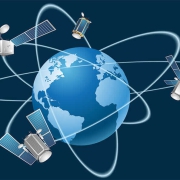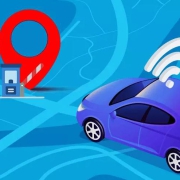How to Visually Manage GPS Tracker Used in Sanitation Vehicles
Sanitation vehicles or garbage trucks are crucial for maintaining the cleanliness and hygiene of our society. They play an important role in collecting garbage and transporting it to appropriate treatment facilities. Proper management of these vehicles is crucial to ensure their effective operation and continued effectiveness. With the advancement of technology, GPS trackers have become a popular method for monitoring and tracking the movement of sanitation vehicles. In this article, we will discuss how to use GPS trackers to visually manage sanitation vehicles.
The benefits of using GPS trackers for sanitation vehicles are enormous. Some of the benefits include improving collection efficiency, optimizing routes, reducing operating costs, and better tracking of vehicle movements. GPS tracking is a valuable tool for managing sanitation vehicles, as it can provide real-time information about vehicle status, location, and operational performance.
One visualization method for managing sanitation vehicles using GPS trackers is through a map based interface. This interface displays the geographical situation of the area covered by sanitation vehicles, providing an easy to understand visual explanation for vehicle movement. The map based interface enables the management team to see the current location of each vehicle, as well as its historical route and destination, on the map. The map shows the path taken by each vehicle and can be analyzed to identify areas that require more frequent garbage collection services. This analysis helps the team effectively allocate resources and optimize routes.
Another useful visualization method is to use real-time alerts. Through GPS trackers, management teams can set alerts for specific events, such as when vehicles enter or leave designated areas. Real time alerts are very useful for preventing unauthorized use of vehicles or for quickly detecting and responding to potential issues. For example, in the event of a malfunction, GPS tracking can alert management teams to the accurate location of vehicles, enabling them to dispatch repair teams or replace vehicles in a timely manner.
In addition, GPS trackers enable management teams to monitor vehicle performance and proactively provide repair services. The GPS system can collect data such as vehicle speed, mileage, engine hours, and fuel consumption. Using these indicators, the fleet management team can visualize the overall performance of the vehicle in the form of charts, graphics, and dashboards. These visualizations enable teams to identify patterns or trends in vehicle performance, which helps optimize maintenance plans, reduce downtime, and extend the lifespan of vehicles.
Using data visualization to track vehicle performance and analyze routes can also help management optimize garbage collection time. Visualization and analysis enable managers to determine which routes are the most effective and propose new routes or improvement suggestions to help employees establish collection locations consistent with large commercial processing centers in busy areas. This information can help effectively schedule shifts and support overall operational planning.
GPS tracking and visualization methods can work together with other waste management technologies. For example, a camera system installed on a garbage truck can be linked to GPS tracking to capture real-time images of vehicle operation. This feature provides a top-down visual representation of garbage collection, providing useful information for processing planning and reducing environmental impacts.
GPS tracking and visualization provide a powerful solution for the management of sanitation vehicles. These tools enable management teams to understand the movement, performance, and maintenance needs of vehicles in real-time, and optimize routes based on collected data. Visualization methods, such as map based interfaces, dashboards, and charts, provide a useful format for presenting this information to stakeholders, making it easy to understand and interpret. By implementing GPS based tracking and visualization systems, waste management companies can further improve their operational efficiency while improving the quality of services provided to communities.











Leave a Reply
Want to join the discussion?Feel free to contribute!